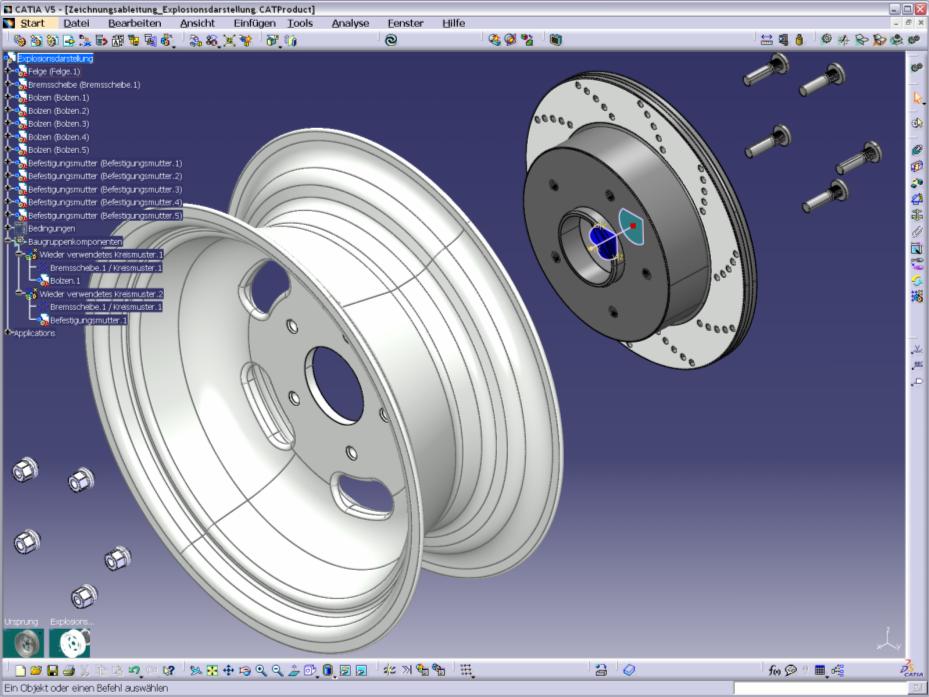

System configuration should be as recommended by Dassault Systèmes.
#Catia v5 install
Also install updated service packs for respective release on GA code.
#Catia v5 64 Bit
Tools ➞ options ➞ Infrastructure ➞ Product Infrastructure ➞ Cache management ➞ Check work with cache systemĬATIA V5 64 bit is to be installed on a 64-bit machine.

The Level of Detail technology or LOD adjusts the polygonal representation of an object to the distance of the user.Tools ➞ Options ➞ General ➞ Display ➞ Visualization For better performance, anti-aliasing should be disabled.This technology is used to smooth out the uneven edges of objects.For example, setting a value of 2 means that objects whose size on screen is lower than 2 pixels are static. Setting a low value displays more details.Setting a high value enables to quickly move large parts.The minimum object size in pixels technology is used to define the size in pixels of objects to be displayed or hidden in the geometry.The sag value defines the chordal deviation for curves and surfaces. In Fixed settings option, user can set a sag value (from 0.01 to 10) for calculating tessellation on all objects which does not vary with object size. It sets a fixed accuracy value for calculating tessellation on all objects which does not vary with object size. For the same accuracy value, the tessellation on small objects will always be finer than on the larger objects. The larger the object, the coarser will be the tessellation. The 3D Accuracy Setting controls the tessellation of surfaces.Ĭalculating tessellation according to object size. Set 2D and 3D Accuracy to maximum value (0.5 or 1.0). Virtual memory of the system should be set to recommended value.Ī warning message gets activated when the application detects that the memory consumption exceeds the given threshold.ĢD and 3D Accuracy settings can be controlled at: Tools ➞ Options ➞ General ➞ PCS ➞ Undo stack size More the stack value, more will be the memory consumption. Stack Size defines the maximum number of commands which can be undone for each document. These will immensely benefit CATIA users. Some of these options are discussed in detail in this document. To improve performance & increase productivity, we need to configure the settings properly. This paper presents some theoretical aspects regarding the design process of products including surfaces and a few case studies showing the many possibilities in creating complex surfaces using the CATIA v5 software.There are many ways to manage the performance of CATIA V5 & accuracy of models. However, the 3D virtual model is accompanied by its mathematical description, parameters, restraints and these eliminates the need of measurements for prototyping or mass production, can be modified at any modeling phase, can be tested in various ways etc., which is a major disadvantage of using a physical part. The virtual model may look the same as the real physical model, but it’s intangible. Using such a system, the engineer models, adds, deforms and edits parts in the process of detailing a shape. Geometric modeling systems provide a virtual environment similar to the real one in which the physical model is constructed/designed and manipulated. The goal of the CAD parametric modeling is to create a 3D representation, flexible and complex enough to encourage the engineer to easily consider a variety of designs with the cost of applying changes as low as possible.


 0 kommentar(er)
0 kommentar(er)
